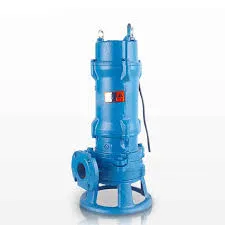English
- Afrikaans
- Albanian
- Amharic
- Arabic
- Armenian
- Azerbaijani
- Basque
- Belarusian
- Bengali
- Bosnian
- Bulgarian
- Catalan
- Cebuano
- Corsican
- Croatian
- Czech
- Danish
- Dutch
- English
- Esperanto
- Estonian
- Finnish
- French
- Frisian
- Galician
- Georgian
- German
- Greek
- Gujarati
- Haitian Creole
- hausa
- hawaiian
- Hebrew
- Hindi
- Miao
- Hungarian
- Icelandic
- igbo
- Indonesian
- irish
- Italian
- Japanese
- Javanese
- Kannada
- kazakh
- Khmer
- Rwandese
- Korean
- Kurdish
- Kyrgyz
- Lao
- Latin
- Latvian
- Lithuanian
- Luxembourgish
- Macedonian
- Malgashi
- Malay
- Malayalam
- Maltese
- Maori
- Marathi
- Mongolian
- Myanmar
- Nepali
- Norwegian
- Norwegian
- Occitan
- Pashto
- Persian
- Polish
- Portuguese
- Punjabi
- Romanian
- Russian
- Samoan
- Scottish Gaelic
- Serbian
- Sesotho
- Shona
- Sindhi
- Sinhala
- Slovak
- Slovenian
- Somali
- Spanish
- Sundanese
- Swahili
- Swedish
- Tagalog
- Tajik
- Tamil
- Tatar
- Telugu
- Thai
- Turkish
- Turkmen
- Ukrainian
- Urdu
- Uighur
- Uzbek
- Vietnamese
- Welsh
- Bantu
- Yiddish
- Yoruba
- Zulu
Telephone: +86 13120555503
Email: frank@cypump.com
Nov . 07, 2024 16:21 Back to list
Compact Inline Sewage Pump Solutions for Efficient Wastewater Management Systems
Understanding In-Line Sewage Pumps A Comprehensive Guide
In-line sewage pumps play a crucial role in municipal sewage systems and industrial waste applications. These pumps are specifically designed to handle the transportation of sewage, which often consists of liquids containing solid waste, sludge, and debris. Their efficiency and functionality make them vital components in maintaining sanitation and environmental safety.
What is an In-Line Sewage Pump?
An in-line sewage pump is a type of centrifugal pump installed within the pipe system itself, meaning that the pump is aligned horizontally with the pipeline. This design allows for more streamlined operation, enabling sewage to flow directly through the pump and helping to minimize the risk of clogs and backpressure. The primary function of an in-line sewage pump is to transfer wastewater from lower to higher levels, ensuring it reaches treatment facilities or septic systems efficiently.
Key Features of In-Line Sewage Pumps
1. Compact Design The in-line configuration allows these pumps to occupy less space compared to other types of sewage pumps. This compactness makes them suitable for installations where space is limited.
2. Efficient Fluid Handling In-line pumps can handle a variety of waste types, including those with solids, thanks to their robust impeller design. Many models are equipped with shredders or grinders to break down solid materials before they enter the pump.
3. Durability Constructed typically from corrosion-resistant materials, these pumps are designed to withstand harsh conditions. Their robust designs ensure a long operational life with minimal maintenance.
4. Versatility In-line sewage pumps are suitable for various applications, from residential buildings to larger industrial operations. They can be used in both gravity-fed and pressurized sewage systems.
5. Energy Efficiency Many modern in-line sewage pumps are designed to reduce energy consumption, which ultimately leads to cost savings for the end-user. Variable frequency drives (VFDs) can further enhance efficiency by adjusting the pump speed to match the system demands.
Applications of In-Line Sewage Pumps
These pumps are widely used in various settings, including
in line sewage pump

- Municipal Wastewater Systems In-line sewage pumps are integral to numerous wastewater treatment plants and systems that manage sewage flow effectively.
- Commercial Buildings Many commercial establishments rely on in-line sewage pumps to ensure that wastewater is efficiently transported to the sewage system.
- Industrial Applications Factories and industrial plants often generate wastewater that includes various solids. In-line pumps are essential for transporting this waste without clogs.
- Residential sewage systems In rural and suburban areas without centralized sewer systems, in-line sewage pumps are utilized in septic systems to pump waste away from homes.
Advantages of In-Line Sewage Pumps
1. Easy Installation The in-line design simplifies installation processes, as they can often be integrated directly into the existing pipeline without requiring extensive modifications.
2. Reduced Maintenance Costs Because of their robust build and ability to handle solids effectively, in-line sewage pumps typically suffer fewer breakdowns, resulting in lower maintenance costs over time.
3. Space Saving With their compact size, they can easily be installed in tight spaces, making them ideal for retrofitting existing systems where space is at a premium.
4. Continuous Operation Many in-line sewage pumps are designed for continuous operation, making them suitable for scenarios where constant sewage flow is expected.
Conclusion
In-line sewage pumps are indispensable for modern sewage management, offering a practical solution for transporting wastewater efficiently. Their compact design, durability, and versatility make them suitable for a wide range of applications, from municipal systems to residential properties. By understanding the benefits and functionalities of in-line sewage pumps, stakeholders can better appreciate their vital role in maintaining public health and environmental standards. As technology continues to advance, these pumps will likely see further innovations, enhancing their efficiency and effectiveness in sewage management.
-
Horizontal Split Case Pump with GPT-4 Turbo | High Efficiency
NewsAug.01,2025
-
ISG Series Pipeline Pump - Chi Yuan Pumps | High Efficiency, Durable Design
NewsAug.01,2025
-
Advanced Flue Gas Desulfurization Pump with GPT-4 Turbo | Durable & Efficient
NewsJul.31,2025
-
ISG Series Vertical Pipeline Pump - Chi Yuan Pumps | Advanced Hydraulic Design&Durable Construction
NewsJul.31,2025
-
ISG Series Vertical Pipeline Pump - Chi Yuan Pumps | Energy Efficient & Low Noise
NewsJul.31,2025
-
pipeline pump - Chi Yuan Pumps Co., LTD.|High Efficiency&Low Noise
NewsJul.31,2025










